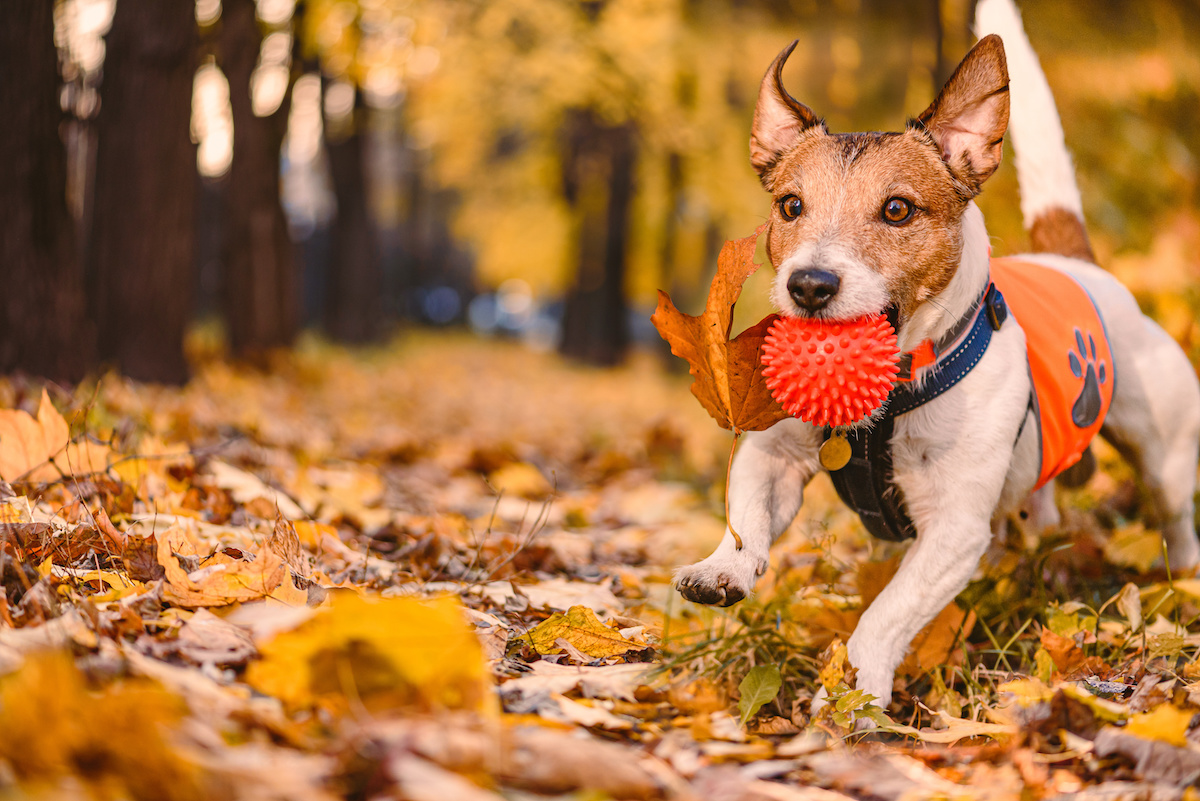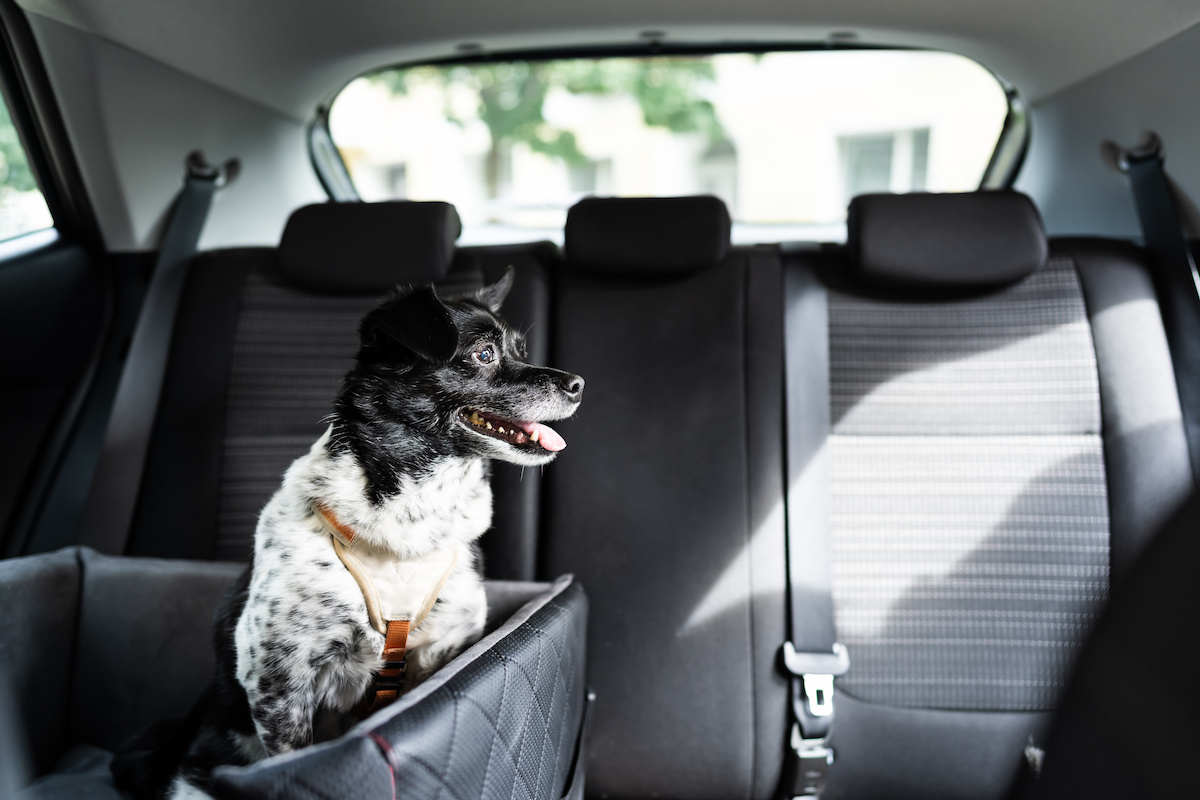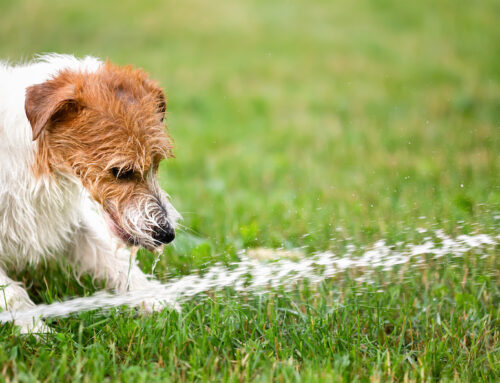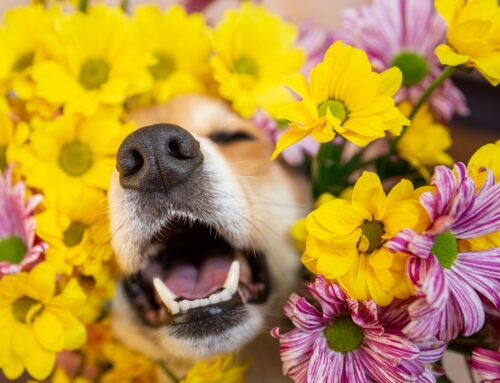As leaves fall and temperatures drop, the onset of autumn brings a myriad of enchanting colors, cozy sweaters, and pumpkin-spiced treats. However, fall also presents a plethora of potential hazards to our beloved pets. This includes toxic plants, harmful foods, and dangerous decorations. But understanding and recognizing these dangers are key in maintaining optimal fall pet safety.
If you ever have questions about fall pet safety, please contact us at Animal Care Center! After all, a safe pet is a happy pet.
Fall Pet Safety: Steer Clear of Harmful Seasonal Plants
Fall ushers in a splendid array of colorful flora, but amidst the beauty lurk plants detrimental to our pets’ well-being. But which plants pose the biggest risks for our pets? Be sure to not bring the following fall plants in or around your home.
Autumn Crocus
The Autumn Crocus may seem attractive with its vibrant petals, but ingestion can lead to severe gastrointestinal distress, kidney and liver damage, or even death in pets. Secure gardens and avoid areas where these flowers bloom to keep pets safe.
Chrysanthemums
A popular fall flower, chrysanthemums can cause vomiting, diarrhea, and skin irritations in pets. Position these plants out of pets’ reach and monitor outdoor pets closely.
Hydrangeas
More associated with late summer, hydrangeas are also highly toxic to pets. Consuming this plant can lead to symptoms such as loss of appetite, stomach pain and diarrhea.
Azaleas
This particular plant is toxic to cats. Coming from the shrub family, even ingesting a small amount can lead to weakness, tremors, and vomiting.
Cyclamen (Persian Violets)
Also toxic to cats is the Cyclamen. Bright in color, the entire plant is considered poisoning. Your cat might experience abnormal heart rate and seizures if they ingest this plant.
Risky Fall Foods
There’s so many fun treats to enjoy during the fall season. However, some of these treats are dangerous to dogs and cats. Awareness and caution can prevent unnecessary trips to the veterinarian due to food-related incidents. During the fall season, keep your pets away from the following risky fall foods.
Chocolate and Candies
It’s no secret that chocolate is bad for pets. Halloween chocolates and candies, especially those containing xylitol, can be lethal to pets. Store sweets securely and educate children on the risks of sharing with pets.
Holiday Feasts
Rich, fatty foods, bones, and other holiday meal remnants can cause pancreatitis and gastrointestinal obstructions in pets. But what makes these delicious foods dangerous for our pets?
Rich and Fatty Foods Can Cause Pancreatitis
Indulgent holiday foods laden with fats, oils, and spices can be extremely harmful to pets. Consumption can lead to vomiting, diarrhea, and can significantly impact the pancreas, leading to pancreatitis – a painful and potentially life-threatening condition.
To avoid this, refrain from giving pets access to foods like gravy, fatty meat scraps, and desserts, and educate guests about the importance of not feeding table scraps to pets.
Bones Can Get Stuck in Airways
Bones, especially cooked ones, are a significant hazard. They can splinter and cause obstructions or perforations in the gastrointestinal tract, necessitating emergency medical intervention. Proper disposal of bones and ensuring that pets cannot access them are crucial steps in avoiding such risks.
Keep Pets Away from Garbage Bins
Pets, especially dogs, are known for their scavenging tendencies, and the aromas emanating from garbage bins containing holiday meal remnants can be irresistible.
A secured bin is an easy way to prevent pets from ingesting harmful foods, plastics, and other waste materials. Use bins with locking lids and place them in areas inaccessible to pets to minimize risks.
Dangerous Decorations
Fall decorations enrich our homes with seasonal charm but can endanger our pets if not managed correctly. Consider pet-friendly decorating options to uphold fall pet safety.
Candles and Lanterns
The warm glow of candles and lanterns can be enticing to pets, who may be attracted to the heat or the flickering light. This can lead to burns, as pets may try to lick or chew on the candles or lanterns.
Meanwhile, if a pet knocks over a candle or lantern, it could start a fire. To prevent these accidents, it is important to place candles and lanterns in inaccessible locations for pets. Place candles and lanterns on high shelves or on tables that are out of reach. Be sure to never leave candles or lanterns unattended when they are lit.
String Lights and Electrical Cords
The flickering allure of string lights may entice pets to chew on electrical cords, risking shocks or burns. Secure cords away from pets and opt for battery-operated lights when possible.
Fall Pet Safety: Battling Fleas and Ticks in Fall:
The crisp air and colorful foliage of fall create a picturesque environment, but they also signal a time when fleas and ticks are on the prowl. These pests are in pursuit of hosts, bringing irritating bites and potential infections. Now is the time to take action when it comes to flea control and prevention.
Pest Control Measures for Fleas and Ticks
Maintaining consistent and effective pest control measures is paramount in preventing flea and tick infestations. Regular applications of vet-recommended anti-flea and tick products, such as topical treatments, oral medications, or collars, are vital in keeping these pests at bay. Maintaining consistent and effective pest control measures is essential in preventing flea and tick infestations.
Come to us at Animal Care Center for help with tick and flea products. Regular applications of anti-flea and tick products, such as topical treatments, oral medications, or collars, are extremely important.
Keep a Clean and Clutter-Free Environment
A clean, clutter-free environment is less inviting to pests. Regularly cleaning pet bedding, vacuuming carpets, and keeping the yard free of debris and clutter can disrupt the life cycle of fleas and ticks, preventing them from establishing a foothold in our living spaces.
Take Prompt Action at the First Sign
At the first sign of fleas or ticks on your pets, immediate action is essential. Consult with your veterinarian for advice on treatment options and pest eradication measures.
Contact Animal Care Center for Help with Fall Pet Safety
As a pet owner, you’ll always want to keep an eye out for dangers with the season’s plants, foods, and decorations. Whether it’s toxic foods or flea trouble, Animal Care Center is here to help. If you have any concerns with your pet this autumn season, please call us to schedule an appointment.







